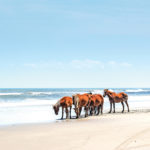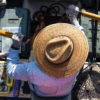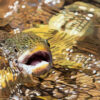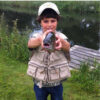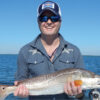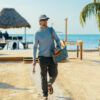How often have you had a wild idea pop into your head knowing that it might never see the light of day?
I recently turned 91 and remember remarkable things. One journey taken while I was in my twenties stands apart.
My adventure began near the end of 1953. At the time, I was on guard duty late one night during a shaky truce at K-14, the United States Airforce base in Kimpo, Korea. I was halfway through my tour with the famous 4th Fighter-Interceptor Wing Squadron. While gazing through the double-layered barbed wired fence, I shuddered at the thought of spending another 11 days crossing the Pacific aboard the USS Randall on my return trip home.
Suddenly, I asked myself, “Why not find a different way to travel back to the States across Europe?”
Other questions quickly followed. “Who would provide the orders needed to pull off this zany idea?” The wing sergeant major on base was a friend. I asked him if it was possible to receive orders for this type of endeavor.
Puzzled, he said yes but explained there was certain criteria. I would have to have relatives or business in Europe. He also pointed out I would need to money to cover the cost of a commercial flight if I was bumped off a Military Air Transportation Service (MATS) flight by someone with higher priority. I also couldn’t go back via Europe if I was discharged.
I told the sergeant major I had relatives in Denmark. He submitted my request along with the appropriate paperwork several months before my rotation; I was supposed to begin travelling to the States for a new assignment in August 1954.
Weeks passed with no word on the orders. I had the nagging suspicion my venture was too ambitious. Then one day, my request came through, just a few weeks before my rotation. I was to proceed to Japan for medical shots, a passport, civilian clothes and more detailed orders. I was granted a 30-day leave with 15 days of travel time from Japan to U.S. soil.
There was a special flight—the Embassy Run—that left Tokyo weekly. I boarded a four-engine C-54 prop aircraft that was noisy and lacked the comforts of Air Force One. It took five days to reach Europe because it stopped periodically for refueling and overnight layovers.
We initially landed in Okinawa to refuel, then continued to Clark Field in the Philippines for an overnight stay. The next day, we ate lunch and refueled in Saigon. The French had just been defeated in a climactic confrontation at Dien Bien Phu. I watched as aircrafts landed to offload refugees fleeing from the communist north.
Our next stop was Bangkok, where we spent the night in the historic five-star Oriental Hotel overlooking the city’s famous waterway. In the morning, we made a brief stop in Calcutta to fuel up, then went on to New Delhi, where we stayed in the luxury Maidens Hotel, a five-star hotel built in 1902.
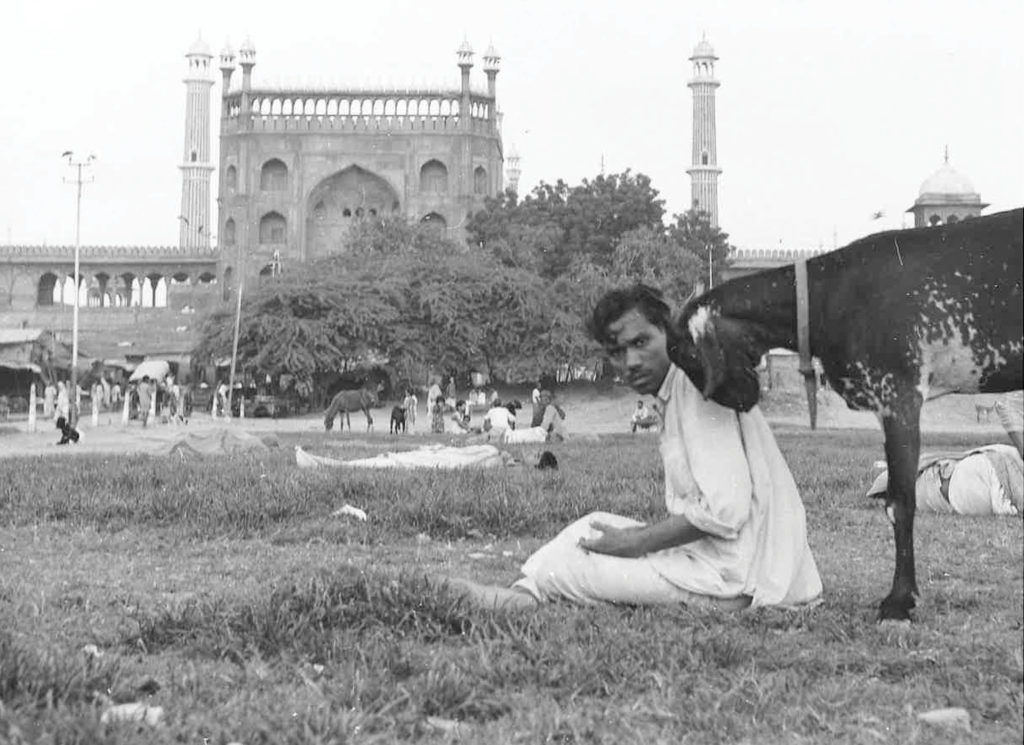
After an excellent breakfast, we departed for Karachi, once again filling our tanks for the journey to an American air base in Dhahran, Saudi Arabia. August’s heat and humidity were overwhelming. My fellow passengers and I stood under the wing of the plane for shade, but flies attacked our sweaty skin. At least our barracks were airconditioned.
In Dhahran, we switched to the Atlantic Division of MATS; the plane landed outside Cairo for refueling. After taking off, the pilot banked low and circled the three Great Pyramids of Giza so we could get a good look at them.
From Egypt, we traveled to Wheelus Air Base on the coast of Tripoli, Libya, in North Africa. Those of us heading to Europe checked in for our next flight.
I settled my gear and took a shower. Before I could rinse off the soap, someone opened the door to the showers and shouted, “There is a plane leaving for Germany within the hour.” We dressed quickly and rushed onboard. Before I know it, I stepped onto the Frankfurt tarmac and my European vacation began.
I spent a few nights at the military base to plan my tour. The weather had been poor, so I decided to head south. The Post Exchange endorsed travel packages to various venues for military personnel. A two-week adventure in Italy that began in Milan caught my eye, and because it began in two days, I had time to enjoy Germany.
I took a Rhine River barge cruise from Mainz to Koblenz. Then I headed to Munich, where I took a train down through the majestic Dolomite Mountains into Milan. I ate breakfast in a hotel. I felt like sending a postcard to my old tent buddies back at Kimpo who did not believe I could pull off this trip.
After breakfast, I met the other members of the tour group: a colonel and his wife, four army nurses and four other GI’s like myself. Our Italian guide was a delightful, middle-aged gentleman who quickly demonstrated his knowledge of the country and historic points of interest throughout the two-week journey.
We traveled mostly by small bus, first leaving Milan for the remarkable city of Florence, where we spent several days. Then we rode to Pisa for a day. The bus broke down on our way to Rome, but we spotted a roadside wine stand and purchased Chianti that helped assuage our delay.
A few of us decided to check out Brick Top, a famous Roman nightspot in the basement of the well-known Via Veneto. We were having a good time, when in walked King Farouk of Egypt with two female companions. He plopped down in front of a slot machine; one “lady” dropped in coins and the other pulled the handle.
After several days of sightseeing, we journeyed to the costal town of Salerno, then rode along curvy Amalfi Coast roads overlooking the Tyrrhenian Sea to Sorrento. From there, we took a ferry to the Isle of Capri and its remarkable Blue Grotto. We saw the impressive ruins of Pompeii, then went on to Naples.
Our tour ended with a stay in Venice during the Italian Film Festival. A companion and I met two vacationing college girls and invited them to join us that evening. A full moon washed over us as our gondola drifted over the Grand Canal behind a barge filled with musicians. It was a special way to finish Italy.
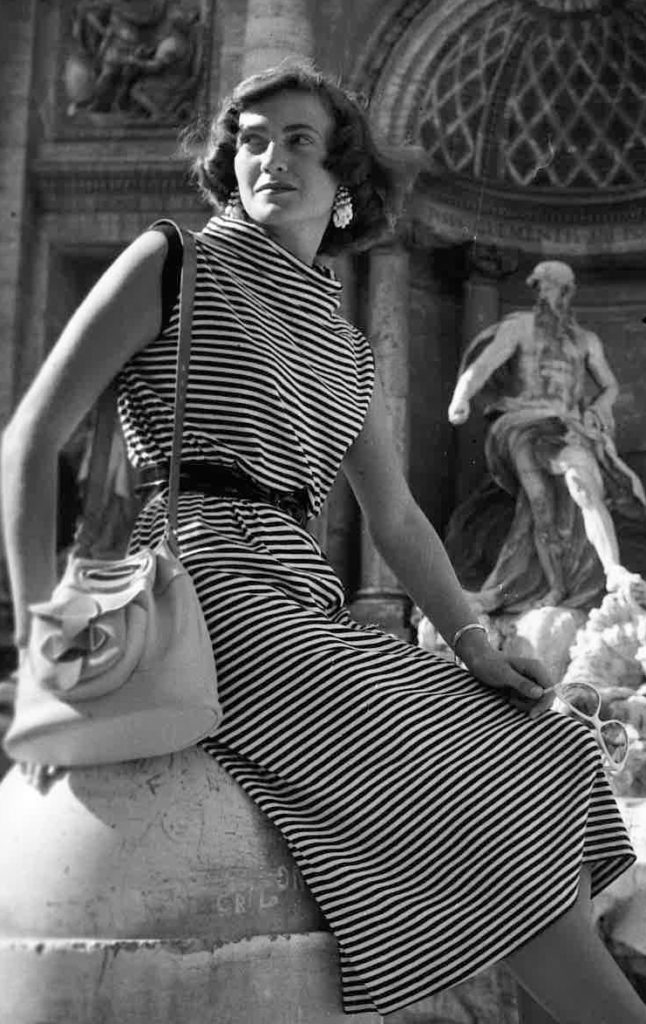
Now alone, I went to Cannes and the French Riviera to look up a young lady I met in Rome. I was mindful of the ticking clock and chose not to see Paris. I decided Denmark was the next stop, and it took two days to get to Copenhagen by train. The visitor’s booth in the station was manned by Danish college students who helped me find an inexpensive place to stay. I missed visiting Tivoli amusement park but was delighted by an invitation to join the students on a roundtrip evening cruise to Sweden.
I rented a bicycle, which is the most practical mode of transportation in Copenhagen. I cycled to see the iconic “Little Mermaid” statue made famous by Hans Christen Andersen. I was told to avoid the streets during rush hour because I would encounter waves of people riding home from work. I discovered this was a good recommendation the hard way; my bike and I became wedged in the middle of a group of cyclists on my way back to my lodgings. The traffic prevented me from turning left at my street, and it took me several blocks (and a few glowering faces from other cyclists) before I escaped.
One of my goals was to visit the little townships in the northern tip of Jutland where my grandparents were born. Luckily, one of the students from the travel office had a job with a car rental firm. When he learned I wanted to see that area, he said he had to deliver a car to Aalborg, near the northern tip of Denmark, and offered me a ride.
My good fortune continued after meeting a local gentleman there who owned a large department store. He was very hospitable and wanted to help me find the villages I was looking for. The best part of the day was discovering an ancient church where some of my ancestors were buried. I also learned a little about the German occupation of the country during World War II. Although he was reluctant to talk about it, I learned later from one of his friends that he had been a leader in the underground.
One morning after returning to Copenhagen by bus, I began thinking my memorable adventure might be worth retelling in an article. The days were limited, and I had to make arrangements to go back to the United States.
As I was sitting in a sidewalk café combing through the newspaper, I read the Secretary of State John Foster Dulles was in London for a nine-power conference. Out of the blue, another idea occurred to me. What if I could fly home on the secretary of state’s plane? That feat would add a major capstone to the story.
Next stop: England. I went to the U.S. embassy in London to see the press officer. After reviewing my travel orders and details of my trip, he thought writing an article about a GI hitchhiking halfway around the world had merit.
“I’ll see what can be done,” he said. “Come back in the morning.”
The next day, he had bad news—there were no extra seats. However, because of my creative undertaking, he stamped my orders with a higher priority. The move permitted me to fly from Prestwick, Scotland, to Westover Air Force Base in Chicopee, Massachusetts. I landed on October 4, 1954, as stated in my orders.
“You have two days travel time to get to Stewart Field, Tennessee,” said the sergeant who checked me in.
“That will put me there on a Sunday, and I haven’t been home in 14 months,” I replied.
He studied my orders closely, noting the countries I recently visited.
“Where do you live?”
“Norfolk, Virginia,” I answered.
Smiling, he said, “How many days would you like?”
Photos by Chiles. T. A. Larson
Chiles T. A. Larson is a writer and photojournalist. He is the author of Virginia’s Past Today and Barboursville Vineyards: Crafting Great Wines Inspired by Spirits from the Past.



